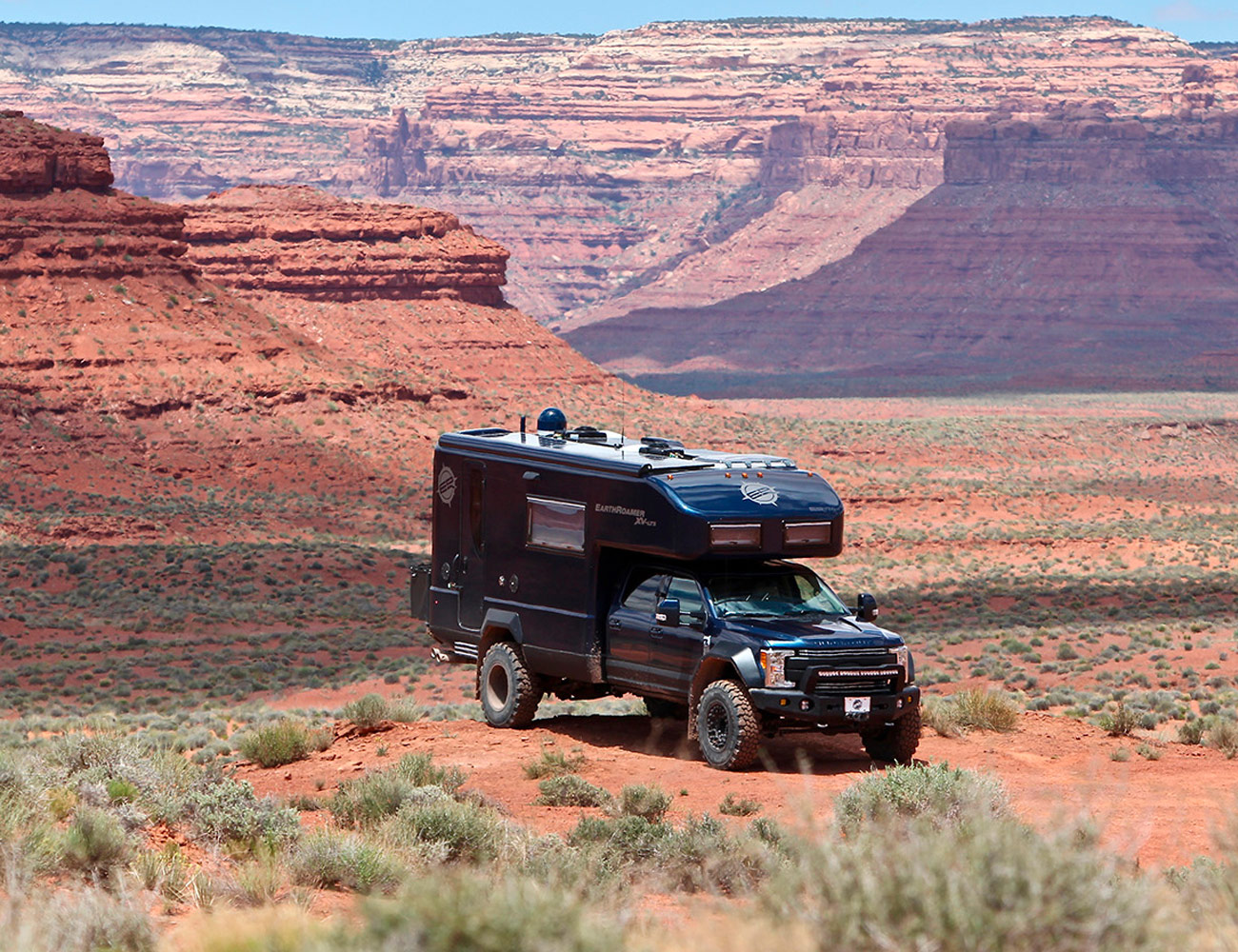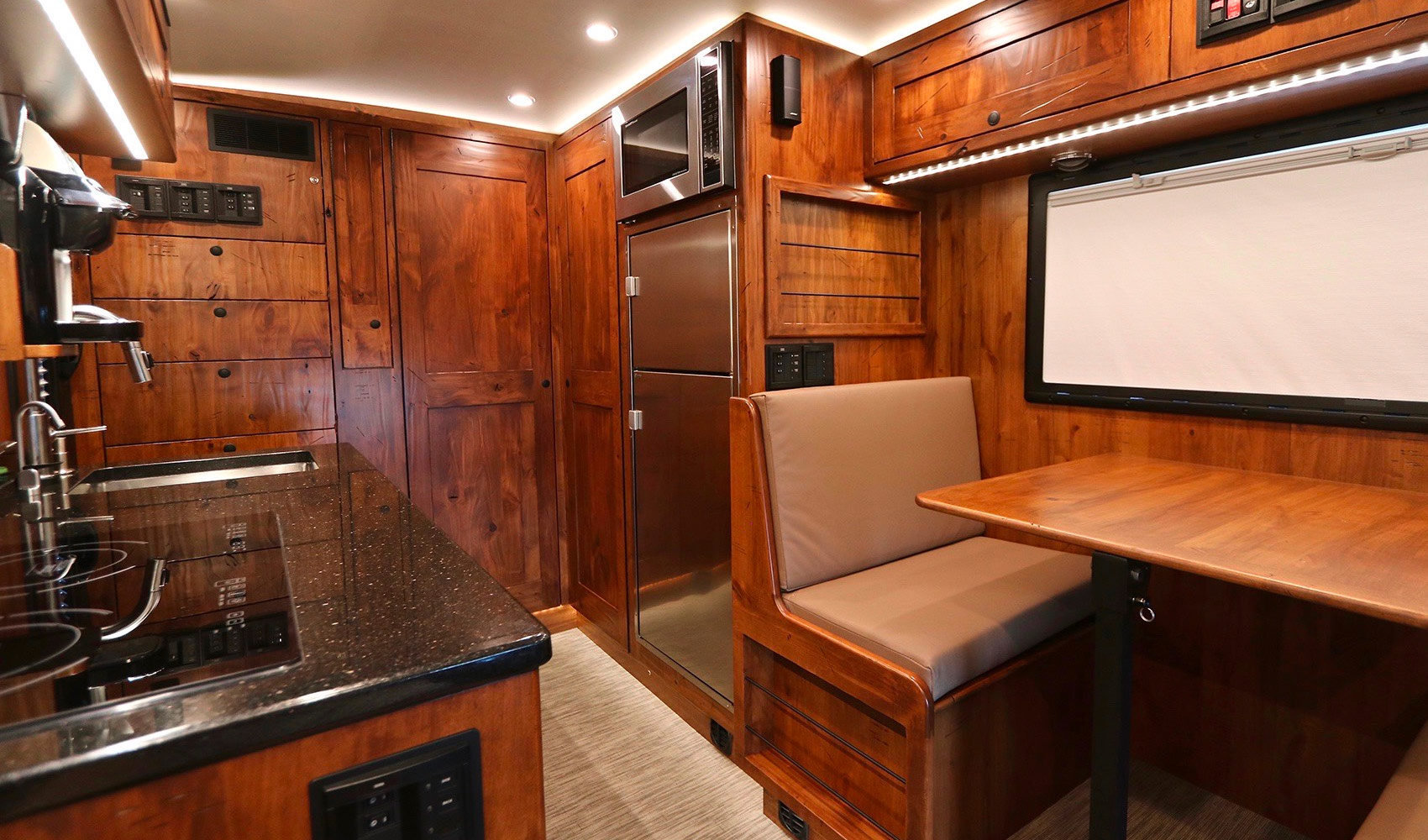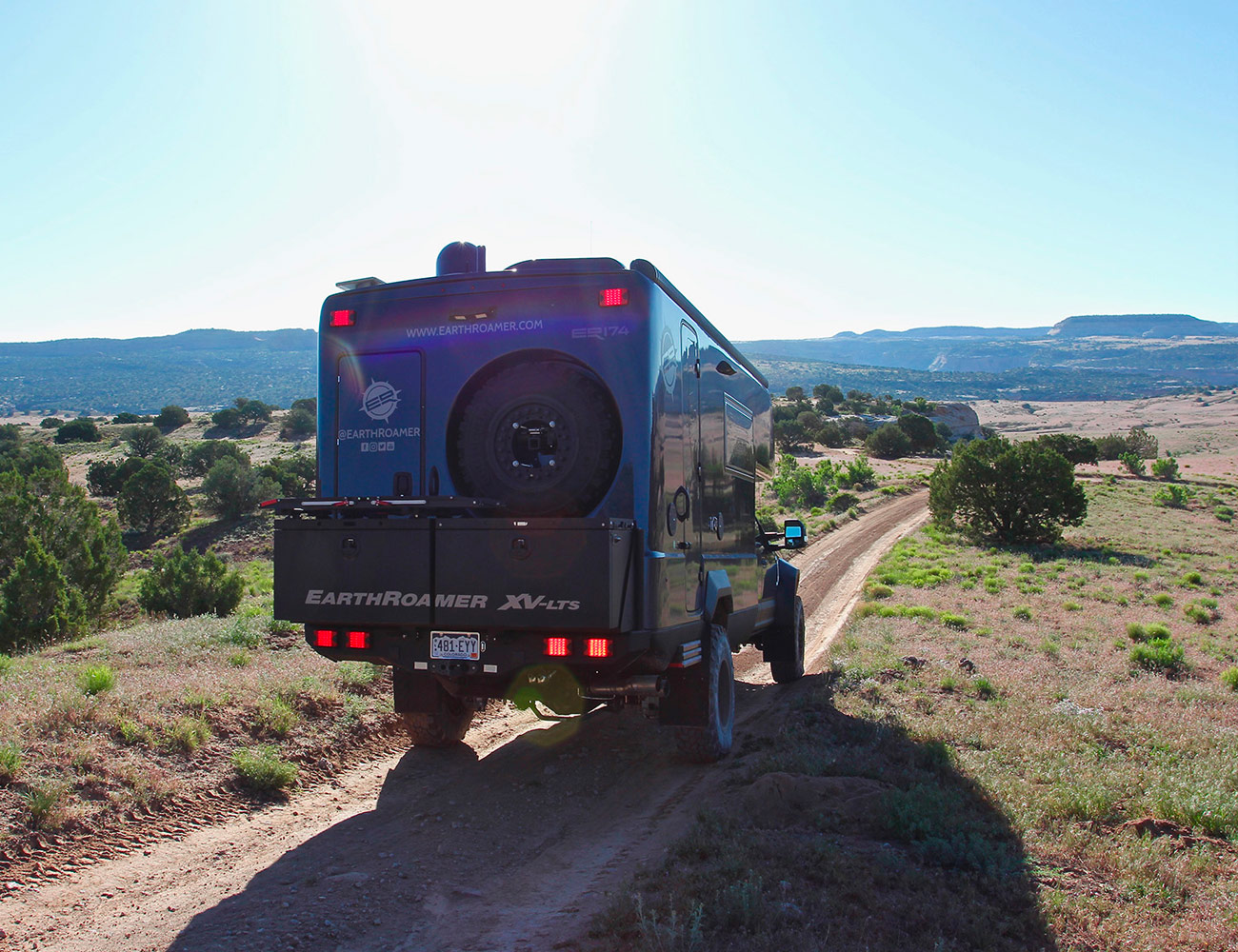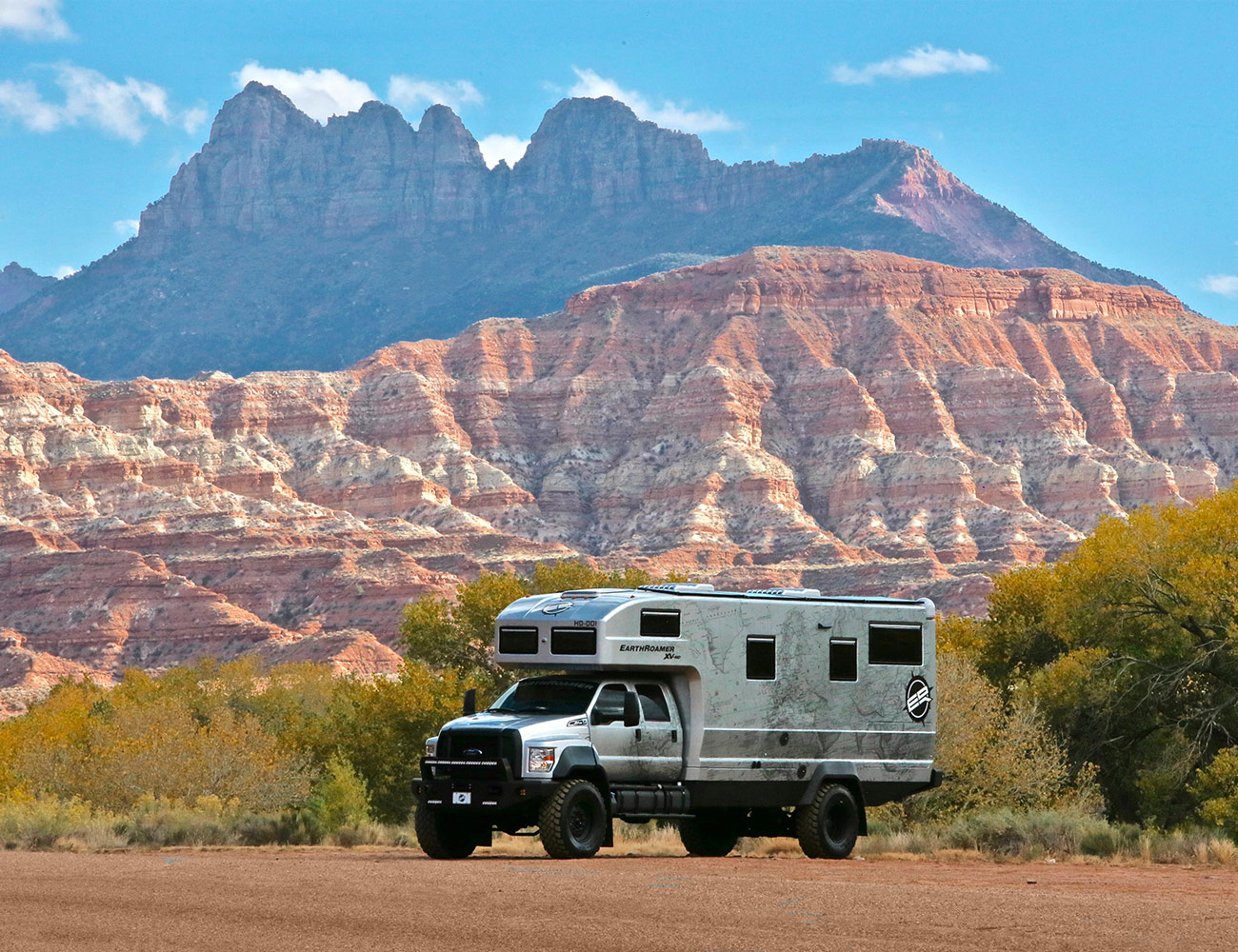“I always had this dream of driving a vehicle completely around the world,” says Bill Sails, EarthRoamer founder. “And I asked my self what kind of vehicle would that be and what would it be like? In 1998, I bought a brand-new diesel Ram 2500 and put a pump-up camper in the back of it and start exploring the mountains of Colorado. Eventually, I took that vehicle, in 1999, quit my job and headed for Alaska for the entire summer and that lead to the design of EarthRoamer.” Like most creations, EarthRoamer was born of necessity, to solve a problem. Swails wanted a vehicle to take to the ends of the Earth; compared to the current models in his lineup, his old Diesel Ram camper is incredibly humble.
In a conversation about EarthRoamer, the question “Yea, but how much does it cost?” is an inevitability. The Ford F-550-based XV-LTS runs between $500,000-$600,000 and the F-750-based XV-HD clocks in around $1.5 million. EarthRoamer has the means to build four XV-HDs per year and a total of 26 XV-LTSs. But, before it manifested as a multi-million dollar overlanding cavalry, the concept of ‘EarthRoamer’ consisted of a simple a log of Swails’ own experiences. “When I first started it, it was just a travel writing company. I wrote for 4Wheeler Magazine, a diesel Dodge enthusiast magazine, and I was writing about both the modifications and building of what at that time I called it the ‘EarthRoamer Truck’ — my original Dodge — as well as the travels I was taking it on. I did trips to Alaska, down to Baja, all over Canada and the western United States.”

It wasn’t until 2003 Swails built the first production EarthRoamers. By then, he had racked up so many miles on his own adventures that it became easy to conceive of a vehicle that could travel the world: a very capable one. When you look at just how capable a modern EarthRoamer is, the price quickly becomes its least impressive aspect.

Swails starts with Ford F-550 and F-750 commercial duty truck cab chassis, which come with just the cab and nothing over the rear chassis. More commonly, companies buy these behemoth shells and build up the missing half, using them as blank slates to build as anything from a delivery truck to a tow truck. In EarthRoamer’s case, they rebuild the truck entirely and substantially modify the rig — its frame gets extended and fitted with the unique mounting system, bumpers are replaced, more extreme lighting is wired in and all new air ride suspension components are installed.

That fully-adjustable air ride suspension is one of the most crucial upgrades. Given that the F-750 Swails uses has a turbo diesel V8 engine capable of 330 horespower and 725 lb-ft of torque, and that a finished rig can total a gross combined weight rating of up to 50,000 lbs, it needs adaptable support. “When the truck comes to us, it’s going to change dramatically in weight. If we’re adding almost 250 gallons of water and 100 gallons of fuel, the air-ride suspension automatically keeps everything at the same ride height.” And when you do head off-road on off-camber trails, all 33,000-lbs or so of truck can be adjusted by inflating one side and deflating the other down to keep level and stable. And considering the 250 gallons of diesel will give you a 900-mile range, the odds of you hitting at least one angled road are pretty high.
Listing out numbers, power figures and capacities is one thing, but aside from the ridiculous terrain an EarthRoamer can handle and how far it can actually take you, it’s what you’re hauling that is the pièce de résistance. Behind the driver’s cab is a one-piece, seamless, multi-layered fiberglass box containing what amounts to a log cabin on wheels. “We have a couple different layouts and materials customers can choose from. Customers can choose among materials like wood, flooring and leather.” From the couch and lounge area to the full kitchen, including the full-size oven, stove and fridge, to the microwave and sink, customers essentially design and drive a luxury apartment. Now that price starts to make more sense.

Overlanding is nothing new, but its popularity multiplied in the past five years alone. In the decade since Swails founded EarthRoamer, he’s seen a massive evolution. “When we started, we sort of coined the term ‘expedition vehicle’ or XV, as opposed to recreational vehicle or RV. There was some activity in the US, but we really had to explain to people what our vehicle was — the ability to take an RV off-road just wasn’t there before. And to be designed for a complete off-grid operation… nobody else was doing that at the time.” These days, there’s an entry point into overlanding culture and outdoor exploration for almost everyone. Adventure motorcycles are probably the most affordable, then come vintage off-roaders, vanlife and tow-behind trailers. However, as far as ultimate off-grid luxury is concerned, EarthRoamer is a pioneer and the leader. But like any other luxury item, you have to pay to play.

